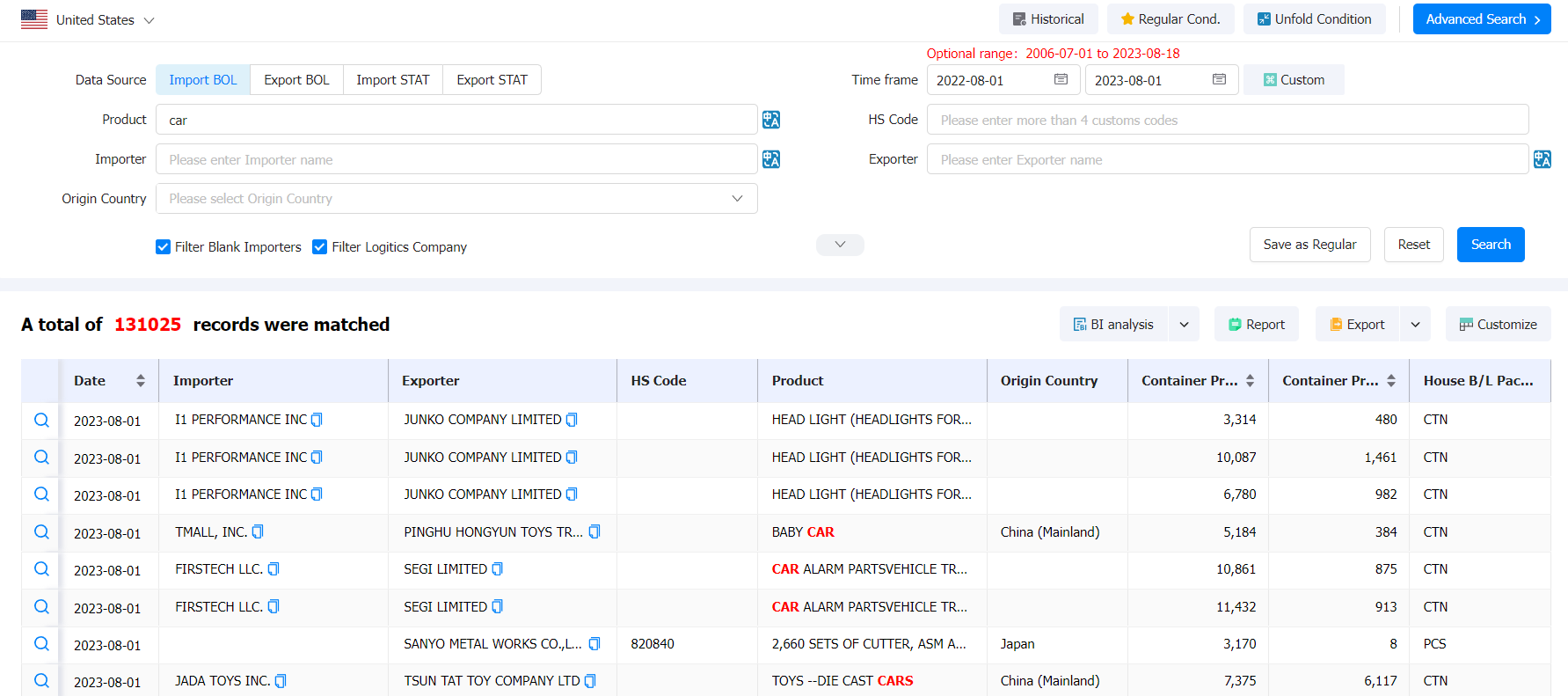 Import News
Import News
 2023-10-12
2023-10-12
Spain, a country renowned for its culinary heritage, is not only a food paradise but also a significant player in the global food import market.
>>>Learn More about Spain Imports<<<

· Diverse Product Range:
Spain's food import landscape is a tapestry of diverse products. The country sources a vast array of food items from around the world, making it a global culinary melting pot. This variety includes fruits and vegetables, meat, seafood, dairy products, grains, spices, and an extensive selection of processed and packaged foods. Notably, Spain imports a wide range of food items that are vital to its cuisine, such as olives for olive oil, wine grapes, and saffron, emphasizing its commitment to maintaining the authenticity of its traditional dishes.
· Global Sourcing Network:
Spain's food import market casts a wide net across the globe. Countries in Europe, especially France, the Netherlands, and Germany, are primary sources of food imports. These neighboring nations contribute to a substantial portion of Spain's imported food products. Additionally, Italy, known for its pasta and coffee, plays a significant role in Spanish food imports. Beyond Europe, the United States is another noteworthy supplier, providing a range of foodstuffs from cereals to processed snacks.
· Influence of Spanish Cuisine:
Spain's vibrant culinary heritage is a key influencer of the food import landscape. The world-famous Mediterranean diet, celebrated for its health benefits, relies on essential imported ingredients. These include olive oil, renowned for its heart-healthy properties, along with the robust flavors of Spanish wines and the prized saffron threads that add an exquisite touch to paella. The demand for these traditional ingredients ensures a continuous influx of imports.
>>>Click to Check More Import And Export News from Tendata<<<
· Fresh Produce Focus:
Spain places great emphasis on the import of fresh produce, particularly fruits and vegetables. These imports supplement domestic production to ensure a year-round supply of fresh and seasonal produce. This not only caters to local consumers but also supports Spain's role as a food exporter, contributing to its reputation as an international food hub.
· Luxury Food Items:
Spain has a notable penchant for luxury food items. Its prized cured hams (jamon), such as jamón ibérico, are imported from carefully selected regions in Spain. These luxurious products cater to a discerning clientele both within the country and in international markets. Furthermore, Spain's famous manchego cheese, crafted from the milk of Manchego sheep, is a coveted import, appealing to both domestic and foreign consumers.
· Gourmet and Specialty Imports:
Spain's culinary scene extends to gourmet and specialty food items. A wide array of international gourmet products, from truffles to exotic spices, are brought into the country to meet the demands of food enthusiasts and professional chefs. The country's appreciation for gastronomy and unique flavors drives the import of these specialty products.
· Seafood Imports:
Given Spain's extensive coastline and strong seafood tradition, it is unsurprising that seafood imports hold a significant place in the market. The country imports a variety of seafood, including fish, shellfish, and specialty seafood products like anchovies and bacalao (salted cod). Spaniards' love for seafood paella and tapas ensures a steady stream of these imports.
In summary, Spain's current food import landscape is a colorful mosaic of diverse products sourced from various corners of the world. Whether it's to satisfy the demands of its rich culinary heritage or to cater to the evolving tastes of its consumers, Spain's food import market continues to thrive as it embraces global flavors while staying rooted in its own culinary traditions.
The Spain food imports trend reflects the rich culinary culture of the country, consumer demand for diverse and high-quality food products, and global influences on the food industry. As Spain continues to embrace culinary diversity and quality, its food imports trend is expected to evolve to cater to the changing tastes and preferences of Spanish consumers.
Customs data contains a vast amount of information, and extracting relevant customer contact information can be time-consuming. Is the outcome truly unsatisfactory, or is it due to using customs data in the wrong way, resulting in wasted effort and time?
1. Establishing a Customer Resource Repository by Country
Creating a customer resource repository is akin to your own work record sheet. Begin by utilizing trade tracking functionality to compile a list of all customers from a particular country. Next, perform specific analyses based on factors such as each purchaser's procurement volume, purchase cycle, product specifications, and supplier systems (with emphasis on examining the diversity or singularity of their supply channels; preferably retaining customers with diversified suppliers, as those relying on a single supply channel may be harder to develop). Lastly, filter out the potential high-quality customers constituting 30% of this country's total, and record them in your customer resource repository, allowing flexible categorization by country, time, customer name, follow-up steps, contact numbers, emails, and contacts. (>>>Click to Start Developing Customers for Free<<<)

2. Creating a Customer Resource Repository by Peer Companies
Have a solid understanding of peer companies' English names (including full names, abbreviations, etc.). Utilize the global networking capability of suppliers to generate a list of all clients associated with peer companies within the system. Following this, perform essential analyses on these clients based on factors like procurement volume, procurement cycle, product models, and others. Ultimately, identify and record the key customers of your targeted peer companies in your customer resource repository.(>>>Click to Start Developing Customers for Free<<<)

3. Cataloging New Customers from Each Country
For newly emerging customers from specific countries, use the trade search function to select the country, set the date range and limit product names or customs codes. Check "Newest," and the search results will display high-quality customers that emerged most recently in that country within the designated timeframe. Since these customers are newly established, with recent procurement transactions, their supplier stability might be unsteady. Therefore, prioritize following up with these new potential buyers. Lastly, record all these new prospects in your customer resource repository.、(>>>Click to Start Developing Customers for Free<<<)
All three strategies for utilizing customs data to develop customers can be tailored to your company's actual needs. Depending on market conditions, industry specifics, strategic requirements, etc., find the approach that suits you best, with the sole aim of classifying and organizing your premium customers. Once you've found suitable customers, the next step is to contact them precisely, employing various methods such as phone calls, emails, and online chats.
Category
Leave Message for Demo Request or Questions


 T-info
T-info T-discovery
T-discovery

 My
Tendata
My
Tendata Market Analysis
Market Analysis Customer
Development
Customer
Development Competitor
Monitoring
Competitor
Monitoring Customer Relationship
Customer Relationship





































































































































